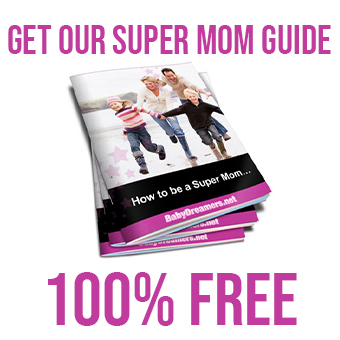If your usually smiley baby has suddenly turned into a drooly, fussy little bundle of frustration—welcome to the world of teething. It’s one of the many milestones in your baby’s development, and while exciting, it can also be downright exhausting. The good news? With a little understanding and the right strategies, you can help your baby sail through this phase with as few tears (and sleepless nights) as possible.
What Is Teething?
Teething is the process of your baby’s first teeth (also known as primary or milk teeth) pushing through the gums. It usually begins around 4 to 7 months, but every baby is different—some start as early as 3 months, while others may not see their first tooth until after their first birthday.
The most common early teeth to appear are the bottom front teeth (central incisors), followed by the top front ones. By the time your baby is around 3 years old, they’ll typically have a full set of 20 baby teeth.
Signs Your Baby Is Teething
Not sure if teething is the culprit behind your baby’s recent fussiness? Look for these common signs:
Excessive drooling
Chewing on hands, toys, or anything within reach
Red or swollen gums
Irritability or crankiness
Trouble sleeping
Slightly elevated temperature (not a fever)
Keep in mind that not all babies show obvious signs, and symptoms can vary from one child to another.
How to Soothe a Teething Baby: Tips That Actually Work
Let’s face it—teething can be tough on both babies and parents. But there are plenty of tried-and-true ways to bring your little one some comfort:
Massage Their Gums
Gently rub your baby’s gums with a clean finger or a soft, damp cloth. The pressure can offer some much-needed relief.
Chill (But Don’t Freeze) Teething Toys
Cold helps numb the gums. Use a refrigerated (not frozen) teething ring or a cold washcloth. Frozen items can be too harsh and potentially damage your baby’s delicate gums.
Use a Teething Gel or Cream (With Caution)
Some parents find relief using over-the-counter teething gels. Always check with your pediatrician before using any medicated products, especially those containing benzocaine, which is not recommended for children under 2.
Offer Hard Teething Toys or Silicone Chewables
Let your baby chew on age-appropriate, BPA-free teething toys. The pressure can counteract the discomfort of the erupting teeth.
Provide Cold Foods (If Baby Eats Solids)
If your baby has started solids, offer cold applesauce, yogurt, or a chilled mashed banana. It’s soothing and helps take their mind off the pain.
Lots of Cuddles and Comfort
Sometimes, all your baby needs is to be held and reassured. Skin-to-skin contact, cuddles, and soft lullabies can work wonders during teething meltdowns.
What Not to Do
While it’s tempting to try anything to stop the tears, steer clear of:
Teething necklaces or amber beads (They pose choking and strangulation risks)
Frozen foods or toys (They can damage gums or become choking hazards)
Alcohol-based remedies (Never rub alcohol on a baby’s gums)
When to See a Pediatrician
While mild fussiness and drooling are normal, contact your doctor if your baby:
Has a high fever (over 100.4°F/38°C)
Develops a rash, diarrhea, or vomiting
Seems unusually lethargic or inconsolable
These symptoms may point to something other than teething.
FAQs About Teething
When do babies typically start teething?
Most babies start teething between 4 and 7 months, but it can vary widely.
How long does teething last?
Teething can last for a couple of years, with breaks in between. Each tooth takes about 1-7 days to break through the gum.
Can teething cause a fever?
Teething might cause a slight rise in temperature, but not a true fever. If your baby has a high fever, consult a doctor.
What are the best teething toys?
Look for BPA-free, food-grade silicone or rubber teethers that are easy to grip and can be chilled for added relief.
Can I give my baby pain relievers?
With your pediatrician’s guidance, infants over 2 months can sometimes be given acetaminophen or ibuprofen for pain. Always follow proper dosage instructions.
Is drooling during teething normal?
Yes! Excessive drooling is a classic teething sign. Keep a soft bib on hand to help prevent skin irritation.
What if my baby won’t eat while teething?
Sore gums can make eating uncomfortable. Offer softer or chilled foods and try feeding when they’re calm and rested.
Do all babies experience pain while teething?
Not necessarily. Some babies breeze through teething with barely a fuss, while others may feel more discomfort.
—
Teething is a bumpy but completely normal part of your baby’s development. With a little patience, the right soothing techniques, and a whole lot of snuggles, you’ll both get through it—and soon you’ll see that tiny, adorable toothy smile peeking through.











